- Register
- Log in to Tune-In
- Wishlist (0)
-
Shopping cart
(0)
You have no items in your shopping cart.
Beatles News

The last party I attended in Fort Collins before the virus shutdown was a Beatles party. It was at the home of a friend who had been a big Beatles fan when she was young. She had been a member of The Beatles Fan Club and saw the group at Red Rocks in 1964.
I also have been a lifelong Beatles fan and I brought all of my stuff along to the party. We looked through old Beatles magazines, books, and even stacks of Beatles bubble gum cards.
But the most fun was getting out all of our old Beatles records — yes, vinyl versions – to spin great tune after great tune. It was a feast of melodic, upbeat music with those great familiar voices.
Of all the great Beatles recordings out there, the one that currently sticks in my head is from perhaps the band’s greatest album, Sgt. Pepper’s Lonely Hearts Club Band and that is “When I’m Sixty-Four.” There’s a reason for that — this year on June 8 I turned sixty-four.
Source: Tim Van Schmidt/northfortynews.com
details
The All Things Must Pass Orchestra Copyright: other
Festival of Chichester regulars The All Things Must Pass Orchestra, comprising musicians from Seaford, Rottingdean, Brighton, Danehill and Littlehampton, were looking forward to celebrating the song’s 50th anniversary this year.
Instead, when the coronavirus lockdown hit, their gigs were wiped from the calendar.
But now they have got together – in isolation – to celebrate Harrison’s masterpiece, a song which has taken on special new resonance in the challenging months we have been going through.
The song includes the verse:
Now the darkness only stays the night-time
In the morning it will fade away
Daylight is good at arriving at the right time
It’s not always going to be this grey
Source: midsussextimes.co.uk
details
When you look at his time in The Beatles, you can say George Harrison really broke through during the sessions for The White Album (1968). On that release, George delivered “While My Guitar Gently Weeps” and “Long, Long, Long,” songs which rank among the finest of his career.
But that didn’t mean George started being treated as an equal by Paul McCartney and John Lennon. In early ’69, during the sessions for Let It Be (originally called Get Back), George still had a hard time convincing the famed Beatles songwriters to give Harrison tracks the time of day.
That’s how George ended up with some 4 minutes’ worth of material on that album. And it wasn’t for lack of trying. Prior to recording “For You Blue” and “I Me Mine,” George debuted “All Things Must Pass,” “Let It Down,” and “Hear Me Lord” for The Beatles. (They basically ignored all three.)
Source: cheatsheet.com
details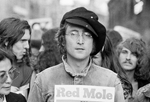
Ringo Starr is an artist with an eclectic catalog. Over the years, he’s made rock songs, pop songs, children’s songs, Christmas songs, and disco songs. He once made a country album called Beaucoups of Blues.
The album, which was released early in Ringo’s solo career, was a change of pace from the material he made with the Beatles. John Lennon opened up about his feelings toward the album in an interview. In the process, John gave fans some insight into how he viewed his own work.
Country and western music are a part of Ringo’s musical DNA. Rolling Stone reports he joined an English country group called The Raving Texans during the late 1950s. In the same vein, the name “Ringo” was partially inspired by Johnny Ringo, a Western legend who was involved at the gunfight at the O.K. Corral.
Source: cheatsheet.com
details
After the ugliness of the early ’69 Let It Be sessions, The Beatles declared something of a truce to record Abbey Road later in the year. For his part, George Harrison got into the spirit with two of his best (and most upbeat) songs of his Beatles years.
“Something,” the first of these the group tackled, became George’s only Beatles single (only A-side, to be precise). In July ’69, work began on the second Harrison track to appear on the record, “Here Comes the Sun.”
“It seems as if winter in England goes on forever,” George said about writing the song at Eric Clapton’s house in May ’69. “By the time spring comes you really deserve it.” And you can hear the joy in his voice as he sang the lyrics.
Paul McCartney (bass, backing vocals) and Ringo (drums) did their best to make “Here Comes the Sun” work in the studio. (Both also contributed handclaps to the track.) But the song got recorded with only three Beatles. John Lennon didn’t participate at all.
Source: cheatsheet.com

The Beatles’ “Let It Be” evokes a majestic quality, from its serene and straight forward melody to its crescendo and eventual crash of instruments. Written by Paul McCartney, the iconic band recorded the song for their 1970 album (of the same name), their very last studio record together. A piano base stretches up to the sky, and soon electric guitars wail in unison, giving the enduring classic a soothing, cathartic quality.
“When I find myself in times of trouble, Mother Mary comes to me / Speaking words of wisdom, ‘Let it be,’” McCartney sings on the first verse. Contrary to some beliefs, he is not making a reference to Virgin Mother Mary from the Bible here; instead, it’s a nod to his mother, who was reportedly anti-religion and came to him one night in a dream, thus inspiring the song’s early roots.
“And in my hour of darkness, she is standing right in front of me / Speaking words of wisdom, ‘Let it be.’”
Source: americansongwriter.com
details
To hear She Loves You bursting out of a radio in the last week of August 1963 was to recognise a shout of triumph. Everything the Beatles had promised through the first half of the year found its focus in their fourth single, an explosion of exuberance that forced the world, not just their teenage fans, to acknowledge their existence.
The double-jolt of Ringo Starr’s drums kicked off a record that, unusually, began with the song’s chorus: “She loves you, yeah, yeah, yeah.” Straight away that Americanised triple “yeah” (Paul McCartney’s father, the first to hear the completed song, asked if they could change it to “yes, yes, yes”) offered a fanfare for a culture on the brink of irreversible change. It marked the moment when the Beatles moved from being just another pop sensation to a national obsession: misquoted by prime ministers, cursed by barbers, viewed by schoolteachers as the vanguard of a revolution that must be stopped. And before long, almost universally adored.
Source: Richard Williams/theguardian.com
details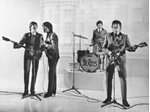
Funny how time flies. June 2 marked the 53rd anniversary of the release of the Beatles Sgt. Pepper's Lonely Hearts Club Band. It was also just the 50th anniversary of Let it Be last month. Despite it being the last release it was actually Abbey Road that was their final album. Beatles historian Denny Somach came on my New Jersey 101.5 evening show to talk about it.
"The Beatles were supposed to make a record. They decided, 'let's film it and see what happens,'" Somach said when he called in. "The problem is they were actually watching each other and it was looking like they were getting ready to break up, it finally got done. It was originally called 'Get Back,' then 'Let it Be,' then they stopped everything, then said 'Lets go back into the studio and do an album like we used to,' and they did Abbey Road."
Somach, whose latest book, "A Walk Down Abbey Road," is filled with Beatles anecdotes, talked about the Isley Brothers reaction to the band who would take their "Twist And Shout" to another level.
Source: nj1015.com
details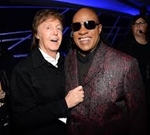
“Ebony and Ivory” is each one in all Paul McCartney’s most well-known songs and one in all Stevie Wonder’s. Its message of racial concord stays as related as ever. The music has acquired loads of criticism from Paul and Wonder’s followers over time for supposedly being kitschy, however these followers don’t decry its message.
However, the music was really banned in South Africa within the 1980s. The music itself wasn’t the explanation the South African authorities banned the monitor. The authorities was upset at Wonder for taking a noble stand.
“Ebony and Ivory” was included on Paul’s album Tug of War — an album which options three duets with different artists. Paul instructed NME the album was “cast like [a film], except using musicians instead of actors.” Wonder was actually extra well-known than most of the film stars of the day!
Paul has fond reminiscences of the monitor’s creation. “I wanted Stevie… I was just reaching. It was just, you know, if you could have anyone. We had a good time. We were all out on Montserrat, and we had a good time.”
Source: Jeremy Spirogis/sahiwal.tv

Imagine if you worked at a record label and passed on The Beatles in 1962. Instead of signing the band for next to nothing, you declined because you thought guitar groups were going out of style. Well, that actually happened in the pre-Fab Four days following an audition at Decca (with a guy named Mike Smith, no less).
The Beatles didn’t stay unsigned for long. By June, they’d landed an audition with Parlophone chief George Martin at EMI studios on Abbey Road. And by September ’62 they’d recorded their first single after dropping Pete Best and bringing aboard Ringo Starr.
While it had only been nine months between the failed Decca audition and the recordings for Parlophone, the songs John Lennon and Paul McCartney were writing had gotten much better. “Love Me Do,” the first Beatles single, did very well (No. 17) for a debut track.
Source: cheatsheet.com
details
If The Beatles were competitive while in the same band together, that wasn’t going to go away once they went solo. Following the group’s April 1970 breakup, each new record by a solo Beatle would prompt comments and critiques from his former bandmates.
The first to go through the ringer was Paul McCartney, whose solo debut McCartney basically came attached to the band’s breakup. When John Lennon weighed in on Paul’s new album, he didn’t hold back. (He actually called it “rubbish.”)
But George Harrison had been the first to field questions about Paul’s new album. On his way through New York just a few weeks after McCartney hit record stores (May ’70), WABC’s Howard Smith asked for his take on the record.
Though he tried to look for the positives in Paul’s debut, George clearly wasn’t in love with the album. And the best he could do was describe it as “fair” while highlighting two tracks he liked.
Source: cheatsheet.com
details
Express.co.uk readers are thoroughly discerning and have made their decision on which is the best Beatles album. Various magazines have ranked the Beatles albums in the past, and there is often a fight among the top three. However, the winner of our Express.co.uk poll is quite surprising, leaving one of these three completely out of the running.
According to Express.co.uk readers, Revolver is the best Beatles album.
The album received 18 percent of the votes, and truly split fans as they threw their weight behind different albums.
This is quite a surprise, given this album was not the favourite of any Beatles members, most famously John Lennon and Paul McCartney.
In a 1971 interview with Rolling Stone, Lennon said one of his favourite albums was The White Album, and gave a pretty harsh reason as to why.
Source: Jenny Desborough/express.co.uk
details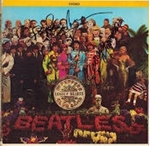
It's been well over fifty years since Sgt. Pepper's Lonely Hearts Club Band first hit the airwaves on both sides of the Atlantic.
It's been well over fifty years since Sgt. Pepper's Lonely Hearts Club Band first hit the airwaves on both sides of the Atlantic.
The frantic screaming of their fans at every concert and the lack of stage monitors made it nearly impossible for them to hear themselves as a musical unit, so they took a step back and rethought the direction in which they were musically heading towards. Ringo Starr often mentioned that were becoming a "bunch of loose musicians" while John Lennon remarked "send out four waxworks ... and that would satisfy the crowds. Beatles concerts have nothing to do with music anymore."
In addition, John's remark "The Beatles are more popular than Jesus" in a London newspaper in March 1966 invited a far-reached public outcry wherever they performed. Their 1966 Philippines tour ended in disaster when they unknowingly snubbed the First Lady Imelda Marcos. By August 1966, The Beatles unanimously felt that their touring days are over, and performed their last concert together at Candlestick Park in San Francisco on 29th August 1966.
Source:Jef details
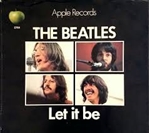
George Martin used to quibble over whether "The Ballad of John and Yoko" was even a Beatles song. What's certain, however, is this: Without it, the group might never have rebounded from the crushing disappointment of Let It Be to complete Abbey Road.
"It was hardly a Beatle track," Martin said in Anthology. "It was a kind of thin end of the wedge, as far as they were concerned. John [Lennon] had already mentally left the group anyway, and I think that was just the beginning of it all."
Something happened on April 14, 1969, however, as Lennon and Paul McCartney worked feverishly to complete this new track: The scars from their most recent sessions began to heal. Martin was back at the helm, after stepping aside for Phil Spector on Let It Be. Engineer Geoff Emerick also returned after having departed during sessions for 1968's White Album.
Source: ultimateclassicrock.com
details
On the late albums by The Beatles, you could tell who wrote which song by who was singing. If Paul McCartney had the lead vocal, there was a 100% chance he wrote the track. (On The White Album, Paul might be playing drums and guitar, too.)
The same applied to songs by John Lennon and George Harrison. Even Ringo Starr sang the one tune he wrote on Abbey Road, the Fab Four’s last recorded album. But in the early days, when John and Paul wrote so many songs “eyeball to eyeball,” it was much trickier.
When then band recorded its first two albums, John and Paul were writing songs that might feature any of the four Beatles singing the lead. And Paul might step in to sing a section even when John wrote the entire track himself.
Source: cheatsheet.com
details